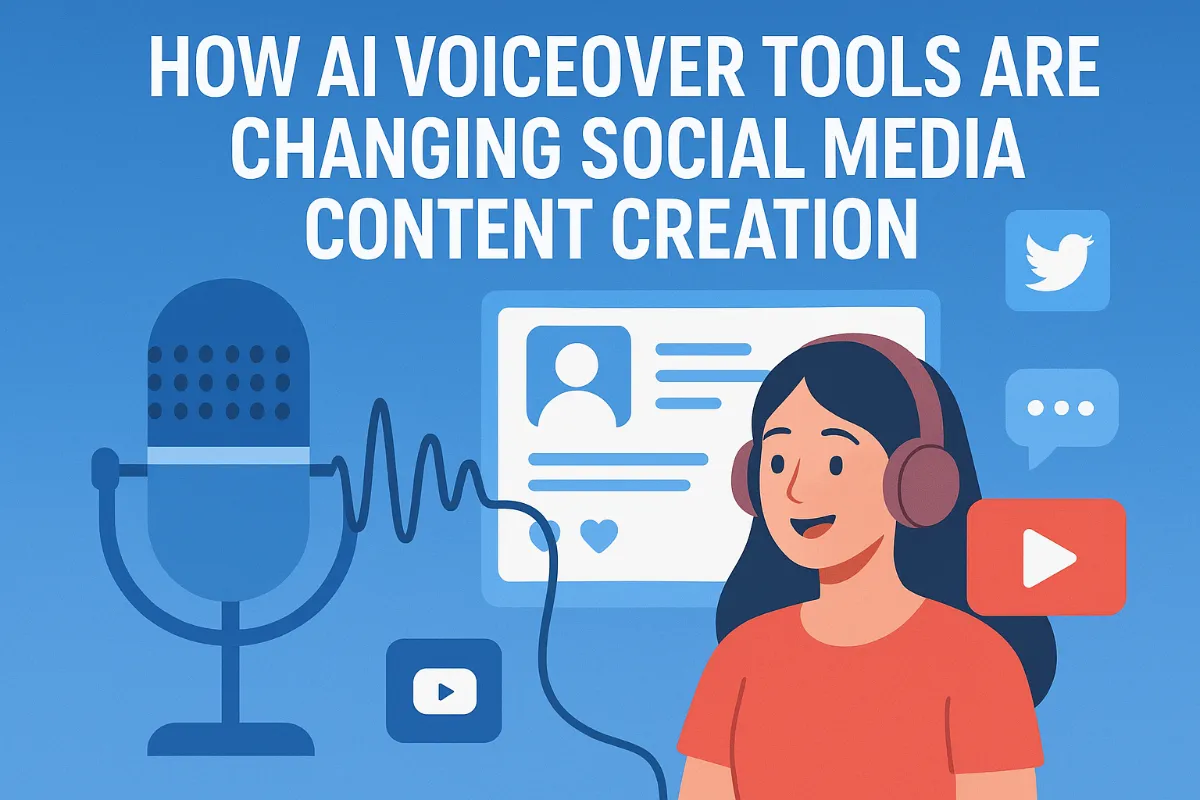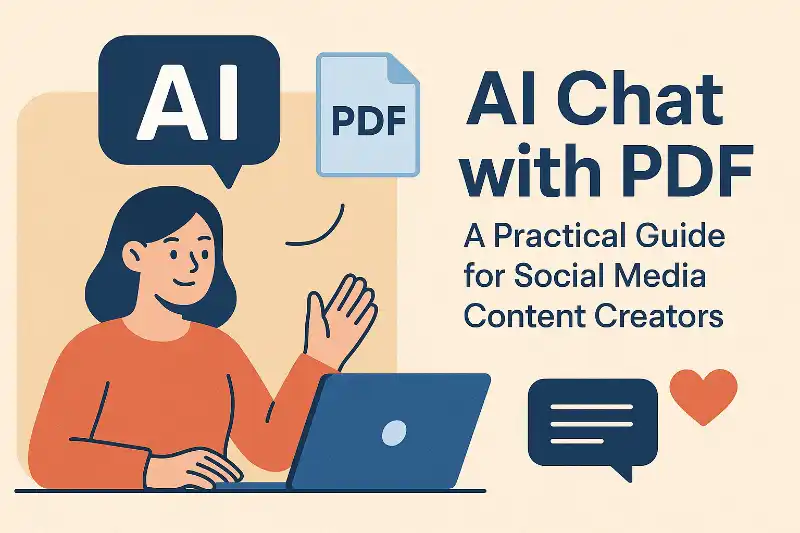AI-Driven Sentiment Analysis: Improving Social Health on Social Media
Understanding Sentiment Analysis in Social Media
Sentiment analysis is revolutionizing how we understand the social health of online communities. But how exactly does it work in the context of social media?
Sentiment analysis is the process of determining the emotional tone behind a series of words. This involves using techniques like Natural Language Processing (NLP), Machine Learning (ML), and computational linguistics to understand attitudes, opinions, and emotions expressed online. It's about going beyond the literal meaning of words to capture the underlying sentiment.
- Brand monitoring: Companies use sentiment analysis to track public perception of their brand. For example, a retail company can gauge customer satisfaction by analyzing social media posts after a product launch.
- Market research: Sentiment analysis helps in understanding consumer preferences and market trends. A finance firm might use it to assess investor sentiment towards a particular stock.
- Customer feedback analysis: Businesses can analyze customer reviews and feedback to identify areas for improvement. A healthcare provider could analyze patient feedback to improve service quality.
Social health refers to the overall emotional well-being of a social media community. It reflects the level of positivity, engagement, and constructive interactions within that community.
A healthy social environment fosters loyalty, encourages participation, and enhances brand reputation. By monitoring sentiment trends, organizations can identify potential crises, manage misinformation, and promote inclusivity.
- Early Detection: Sentiment analysis helps identify negative sentiment spikes, which can indicate emerging issues. For instance, a sudden increase in negative comments about a telehealth service could signal technical difficulties or dissatisfaction.
- Targeted Response: It facilitates prompt and appropriate interventions to address concerns and mitigate negativity. This could involve responding to complaints, providing support, or correcting misinformation.
- Community Building: Sentiment analysis informs content strategies that promote positive interactions and a sense of belonging.
Consider an e-commerce platform using sentiment analysis to monitor customer reviews. Here's a simplified example in Python showing how the platform might detect frustration:
from textblob import TextBlob
text = "This product is terrible! I'm so frustrated."
analysis = TextBlob(text)
polarity = analysis.sentiment.polarity
if polarity < -0.5:
print("Detected high level of frustration.")
TextBlob is a Python library that makes it easy to work with text data. The polarity score it provides is a simple measure of how positive or negative the text is, ranging from -1 (very negative) to 1 (very positive). This is a basic example, and more advanced techniques can dive deeper into specific emotions or subjectivity.
By identifying and addressing negative sentiment, the platform can improve customer satisfaction and foster a healthier online community.
Understanding sentiment analysis is the first step in leveraging ai to improve social health on social media. Moving forward, let's explore the different tools available.
AI-Powered Sentiment Analysis Tools
AI-powered sentiment analysis tools are transforming how organizations monitor and respond to online conversations. But with so many options available, how do you choose the right one?
- Commercial Platforms: Tools like Brandwatch, Hootsuite Insights, and Mention offer comprehensive features for tracking brand mentions, analyzing sentiment, and identifying trends. These platforms often provide high accuracy and scalability out-of-the-box, making them suitable for medium to large businesses.
- Open-Source Libraries: For developers seeking customizable solutions, libraries like NLTK, TextBlob, and spaCy are excellent choices. These offer maximum customization but require more effort to achieve high accuracy and scalability.
- Cloud-Based Services: Cloud providers like Google, Amazon, and Microsoft offer sentiment analysis apis. These are typically scalable and easy to integrate, handling large volumes of data, though customization might be more limited compared to open-source options.
When choosing a tool, consider these features:
- Accuracy: Ensuring high precision and recall in sentiment classification is crucial for reliable results. Commercial platforms and well-tuned cloud services often excel here.
- Scalability: The tool should be able to process large volumes of social media data in real-time. Cloud-based services and robust commercial platforms are usually built for this.
- Customization: Flexibility to adapt to specific industry jargon, slang, and nuanced expressions enhances accuracy. Open-source libraries offer the most potential for deep customization.
- Multi-Lingual Support: Coverage of diverse linguistic contexts is essential for organizations catering to global audiences.
- Integration: Seamless compatibility with existing social media management and analytics platforms streamlines workflows.
- Case Studies: Analyzing real-world performance data across different platforms and datasets provides valuable insights.
- Accuracy Benchmarks: Evaluating precision, recall, and F1-score metrics for sentiment classification helps assess the tool's performance.
- User Reviews: Aggregating user feedback on usability, reliability, and customer support offers a comprehensive view.
Choosing the right ai-powered sentiment analysis tool requires careful consideration of your organization's specific needs and priorities. Next, we'll look at how to use it for content creation.
Implementing AI Sentiment Analysis for Content Creation
ai sentiment analysis is not just for understanding your audience; it's a powerful tool for shaping your content to resonate with them. By understanding the emotional landscape, you can tailor your message to connect more effectively with your target audience.
To make the most of sentiment analysis, start by pinpointing the prevailing emotions surrounding your brand and industry. Here are a few key ways to get started:
- Monitoring: Use ai tools to track real-time sentiment shifts related to your brand, industry, and relevant topics. This involves gathering data from social media, customer reviews, and news articles.
- Data Visualization: Employ dashboards and reports to highlight sentiment trends over time. Visual representations can quickly reveal patterns and anomalies in the data.
- Alerts: Set up notifications for significant sentiment changes to enable timely responses. This ensures you're always aware of potential issues or opportunities.
Once you've identified the trending sentiments, it's time to align your content accordingly. This targeted approach can significantly boost engagement and build stronger connections with your audience.
- Positive Reinforcement: Amplify positive sentiments by creating content that resonates with engaged audiences. Share success stories, testimonials, or content that celebrates their achievements.
- Addressing Negativity: Develop empathetic, informative content to tackle concerns and misconceptions. Acknowledge the issues, provide solutions, and demonstrate your commitment to addressing their needs.
- Neutral Tone: Opt for balanced, objective content when sentiments are mixed or uncertain. This approach allows you to present information without alienating any segment of your audience.
The final step involves fine-tuning your content strategy to maximize engagement based on sentiment analysis insights.
- Content Personalization: Tailor content based on sentiment clusters to maximize relevance and impact.
- Timing: Deploy content during optimal periods when sentiment is most receptive. For example, launch a positive campaign when overall sentiment is already high.
- Format: Adjust content format (e.g., video, infographics, text) to suit prevailing sentiment trends. If visual content is resonating, lean into creating more videos and images.
By implementing these strategies, you can create content that not only informs but also connects with your audience on an emotional level. This targeted approach can lead to increased engagement, improved brand loyalty, and a healthier online community.
The next step involves ethical considerations when using ai sentiment analysis.
Using Sentiment Analysis to Enhance Social Media Marketing
Sentiment analysis is more than just a tool; it's a compass guiding social media marketing strategies. By understanding audience emotions, marketers can refine their targeting, boost engagement, and measure roi more effectively.
Audience segmentation becomes more precise with sentiment analysis. Instead of broad demographics, marketers can segment audiences based on emotional profiles.
- For example, a retail company might target "excited" customers with new product announcements, while addressing "concerned" customers with support resources.
- A finance firm could tailor investment advice based on whether an investor's sentiment is optimistic, cautious, or fearful.
Ad optimization benefits from emotionally aligned messaging. By adjusting ad copy and visuals to resonate with the target audience's sentiments, marketers can improve ad performance.
- A healthcare provider can use positive sentiment in ads promoting preventative care, or address negative sentiment by offering solutions to common health concerns.
Influencer selection gains a new dimension with sentiment alignment. Identifying influencers whose views align with the campaign's desired emotions boosts credibility and impact.
- A beauty brand can partner with influencers known for spreading positivity and body confidence, or a tech company can align with experts who express enthusiasm for innovation.
Community management becomes proactive with sentiment analysis, allowing for fostering positive interactions and addressing negative comments promptly.
- An e-commerce platform can identify and reward loyal customers with positive reviews, while promptly resolving complaints and misinformation.
Campaign monitoring benefits from real-time sentiment tracking. By gauging sentiment around a marketing campaign, adjustments can be made to maximize effectiveness.
- A food company might tweak its advertising if negative sentiment arises due to ingredient concerns, or amplify successful campaign elements that generate positive buzz.
Feedback analysis turns into actionable insights. Analyzing audience feedback helps identify areas for improvement and innovation.
- A video game developer can use sentiment analysis to pinpoint frustrating game mechanics, or a clothing retailer can discover trending styles and preferences from social media comments.
Sentiment-adjusted metrics provide a holistic view of campaign impact. Incorporating sentiment data into roi calculations offers a more accurate measure of success.
- For example, a campaign may generate high traffic but negative sentiment, indicating a need for strategic adjustments.
Brand equity assessment becomes more nuanced. Measuring sentiment trends over time assesses the overall health and value of a brand.
- A consistent positive sentiment trend indicates strong brand loyalty, while a negative trend signals potential brand damage.
Competitive analysis gains a deeper perspective by comparing sentiment metrics against competitors, benchmarking performance, and identifying opportunities.
- A restaurant chain can analyze sentiment around its menu compared to competitors, or a car manufacturer can gauge public perception of its latest models against rival brands.
Consider a financial services company using sentiment analysis to tailor its social media content. The company identifies a prevailing sentiment of anxiety around market volatility. It responds by creating content that offers practical investment strategies and reassurance, which leads to increased engagement and a more positive brand perception.
Sentiment analysis is a valuable tool for social media marketing, enabling tailored strategies and improved roi. By understanding audience emotions, organizations can create more effective campaigns and foster healthier online communities. This leads us to the importance of ethical considerations.
Case Studies: Successful Implementations
ai-driven sentiment analysis is making waves across various industries, offering insights that drive strategic decisions. Let’s explore how sentiment analysis is being successfully implemented in real-world scenarios.
Monitoring brand perception is crucial for maintaining a positive image. Sentiment analysis tools help brands track public opinion, enabling them to address negative feedback swiftly and proactively.
- One major consumer brand used sentiment analysis to identify a pr crisis stemming from a controversial ad campaign. By monitoring social media and news articles in real-time, they were able to pinpoint the source of the negative sentiment and craft a targeted response, which included issuing a public apology and adjusting their marketing strategy. This swift action helped restore public trust and mitigate further damage to their brand.
Understanding customer sentiment towards products is key to driving improvements and ensuring customer satisfaction. Sentiment analysis helps companies sift through vast amounts of feedback, identifying key areas for product enhancement.
- A tech company used sentiment analysis to analyze customer reviews of their latest smartphone. The analysis revealed that while customers loved the camera quality, many were frustrated with the battery life. The company prioritized improving battery performance in their next product iteration, leading to higher customer satisfaction and positive reviews.
Sentiment analysis can also be used to fine-tune marketing and fundraising campaigns. By understanding how the public reacts to different messages, organizations can optimize their strategies for maximum impact.
- A non-profit organization used sentiment analysis to refine its fundraising campaign. Initial analysis showed that their messaging, while informative, was perceived as overly negative and discouraging. By adjusting their content to focus on positive outcomes and the impact of donations, they saw a significant boost in donations and engagement, fostering a more supportive and enthusiastic donor base.
The next step involves exploring the ethical considerations surrounding the use of ai sentiment analysis.
Best Practices and Ethical Considerations
Data privacy and security are paramount when using ai for sentiment analysis. How can you ensure responsible handling of sensitive information?
Here are some best practices to consider:
- Compliance: Adhere to data protection regulations like GDPR and CCPA. These regulations outline how personal data must be collected, processed, and stored.
- Anonymization: Implement techniques to protect user identities and sensitive data. Remove or mask personally identifiable information (PII) to prevent re-identification.
- Transparency: Communicate data collection and usage practices clearly to users. Explain how sentiment analysis works and how data is used to improve their experience.
Robust security measures are essential to prevent unauthorized access and data breaches. Implement encryption, access controls, and regular security audits to safeguard data.
Consider the potential for biases in sentiment analysis algorithms. Training models on diverse datasets and combining ai insights with human judgment can help mitigate these biases.
As we explore ai's impact on content strategy, Social9 helps content creators generate engaging content with ai-powered tools. Now, let's delve into bias mitigation.
Bias Mitigation
Addressing bias in ai sentiment analysis is critical for ensuring fair and equitable outcomes. Bias can creep in at various stages, from data collection to model training and interpretation.
Here’s how we can work towards mitigating it:
- Diverse Datasets: Ensure the data used to train sentiment analysis models is representative of diverse demographics, linguistic styles, and cultural contexts. This helps prevent the model from favoring certain groups or perspectives.
- Algorithmic Auditing: Regularly audit sentiment analysis algorithms for biased outputs. This involves testing the model with various inputs to identify any systematic unfairness or discrimination.
- Human Oversight: While ai is powerful, human judgment remains essential. Incorporate human review processes to validate ai-generated sentiment scores, especially in sensitive applications. This helps catch nuances and context that ai might miss.
- Contextual Understanding: Develop models that can better understand the context in which language is used. This is crucial for distinguishing between genuine negative sentiment and, for example, sarcasm or critique that isn't intended to be harmful.
- Fairness Metrics: Employ specific fairness metrics during model development and evaluation. These metrics help quantify and track potential biases, guiding efforts to reduce them.
- Bias Awareness Training: Educate developers and users about the potential sources and impacts of bias in ai systems. Fostering this awareness is the first step towards proactive mitigation.
By actively working on these areas, we can build more trustworthy and inclusive sentiment analysis systems.
The next step involves exploring the future of sentiment analysis.
The Future of Sentiment Analysis
The future of sentiment analysis is bright, with ai advancements promising more nuanced understanding of online emotions. Imagine ai that not only detects sentiment but also understands the why behind it.
Deep Learning: Expect more advanced neural networks capable of understanding subtle emotional cues and context. This means detecting sarcasm or humor more accurately.
Contextual Analysis: ai will better understand the context of conversations. For example, ai could differentiate between frustration with a product and general dissatisfaction.
Emotional AI: This involves ai recognizing and responding to complex human emotions. It could tailor responses in real-time.
AR/VR: Sentiment analysis can enhance immersive experiences. Imagine virtual environments adapting based on your emotional state.
IoT: Sentiment analysis can provide real-time feedback from iot devices. A smart home could adjust settings based on your mood.
Blockchain: Blockchain can secure and verify sentiment data. This ensures data integrity and prevents manipulation.
Ensuring ethical advancement in ai is crucial as these technologies evolve.
- Frameworks: We need clear ethical guidelines for ai-driven sentiment analysis. This ensures responsible use.
- Accountability: Transparency in ai decision-making is essential. Users should understand how ai affects their online experiences.
- Collaboration: Dialogue between stakeholders will shape the future of ethical ai.
As ai becomes more integrated, ethical considerations are crucial for responsible innovation.
Next, we'll wrap up with some final thoughts.





